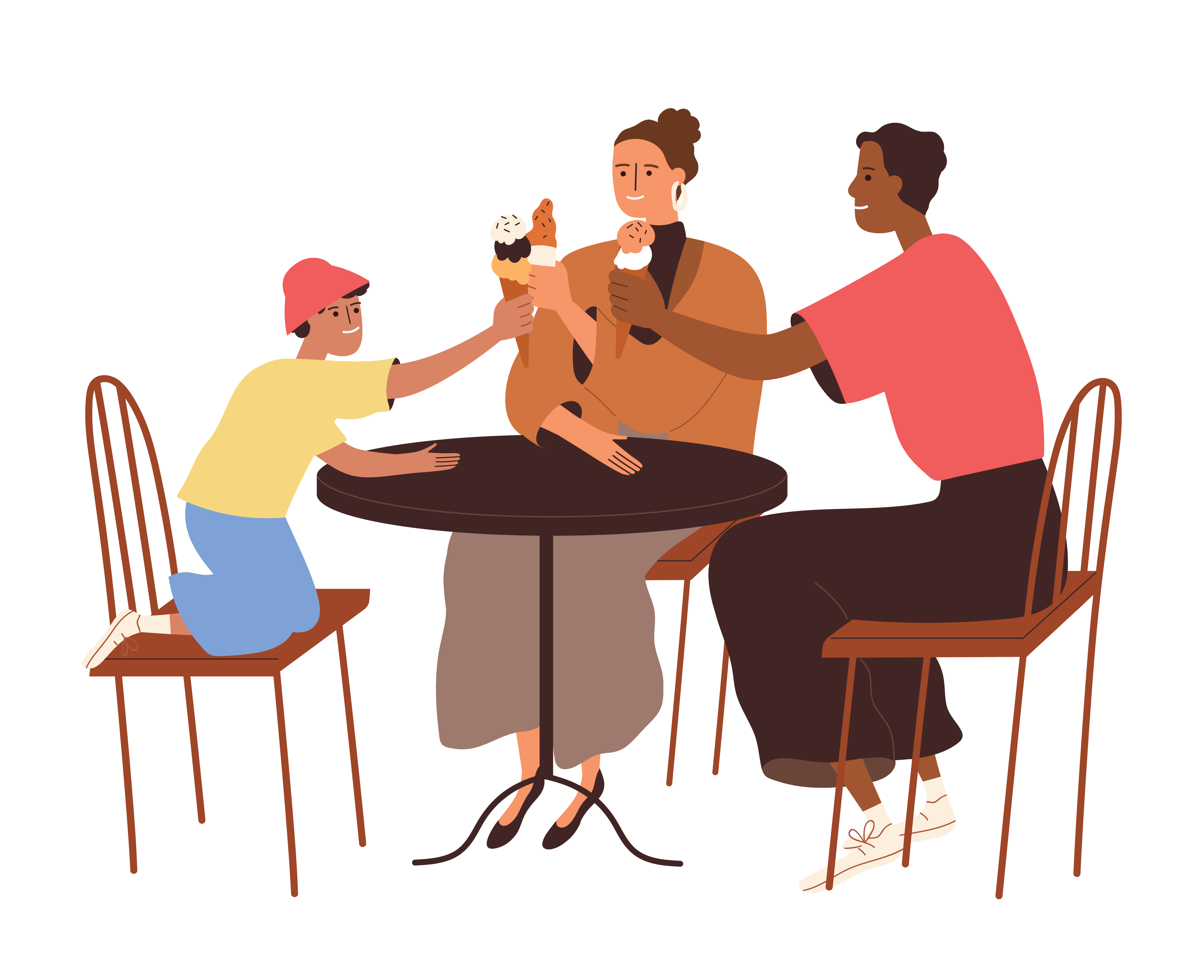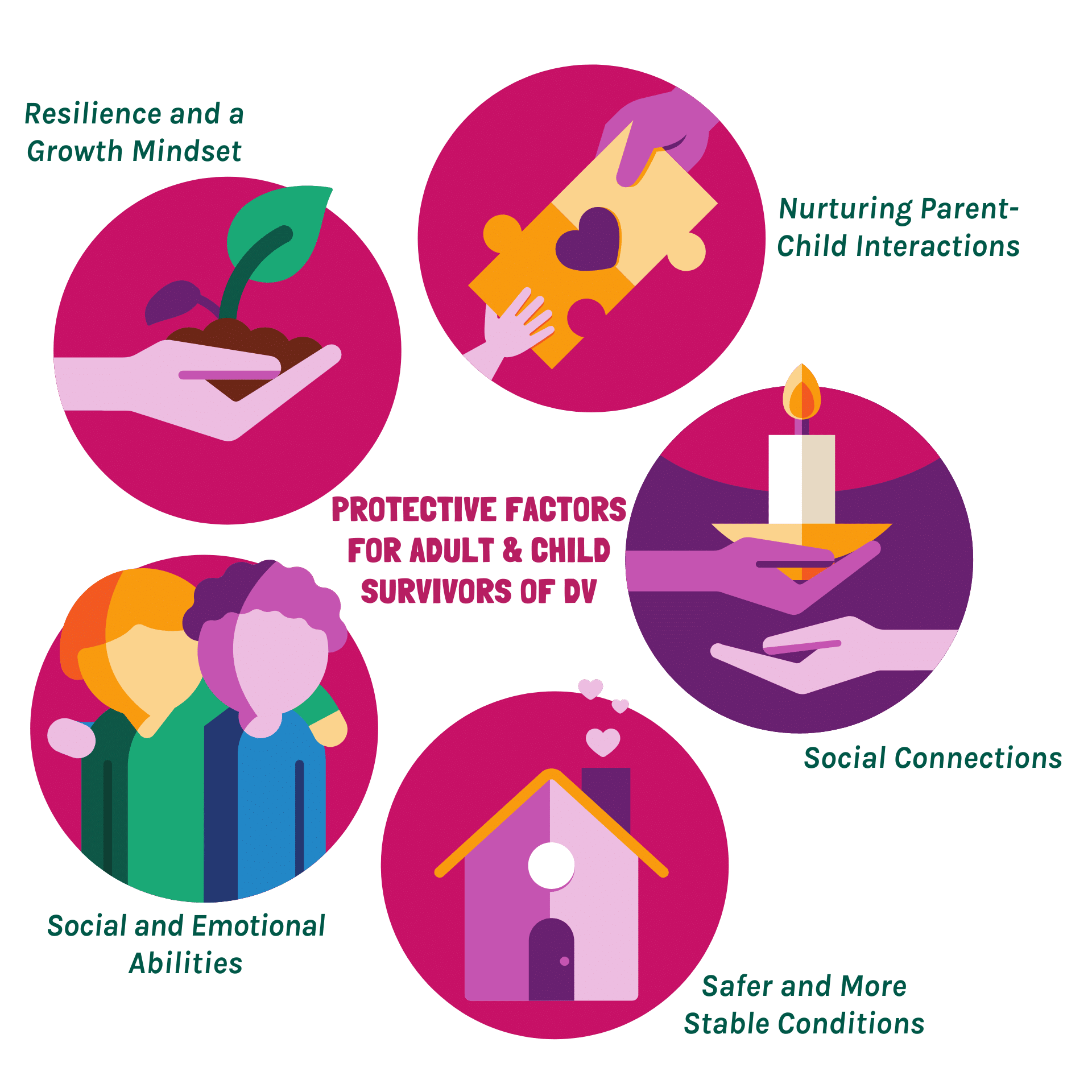Protective Factors for Adult and Child Survivors
Domestic violence (DV) protective factors are individual and relational attributes, as well as environmental and social conditions, that lessen the impact of domestic violence for adult and child survivors and promote their safety, healing, and well-being.
Studies show that child serving programs such as child welfare, domestic violence, early childhood, mental health, and other providers can lessen the impact of domestic violence (DV) on both child and adult survivors and promote their safety, healing, and well-being by building protective factors.
An environment of on-going violence and coercive control can make it more difficult to reinforce or build adult and child survivors’ protective factors because the person who uses domestic violence often directly or indirectly undermines their relationships, access to resources, and sense of self-worth, as well as the adult survivor’s parenting role. The impact of these experiences can further complicate matters, as a survivor may be experiencing reduced energy, have emotional outbursts, appear to be disengaged, or suffer other effects that make it difficult for practitioners to identify or strengthen protective factors. Social conditions can reinforce a domestic violence offender’s efforts to undermine survivors. Yet, protective factors can be strengthened even under adverse circumstances, and growth in any one of the protective factors can be the foundation for growth in others. Domestic violence and child serving providers play a direct role in these efforts, as well as survivors themselves and their family members, friends, and communities. Thus, it is important for practitioners to consider the contexts of adult and child survivors’ lives, circumstances, experiences, strengths, and needs in order to understand and appreciate the multiple pathways for reinforcing, building, and sustaining protective factors, and helping to facilitate survivors’ journeys to safety, healing, and well-being
Domestic violence protective factors are individual and relational attributes, as well as environmental and social conditions, that lessen the impact of domestic violence for adult and child survivors and promote their safety, healing, and well-being. Protective factors can be strengthened even under adverse circumstances. Growth in any one of the protective factors can be the foundation for growth in others.
Advocates, survivors, their family members, friends, and communities can all help promote these 5 protective factors. Read more about how parents and caregivers can get additional help for children and youth survivors.


